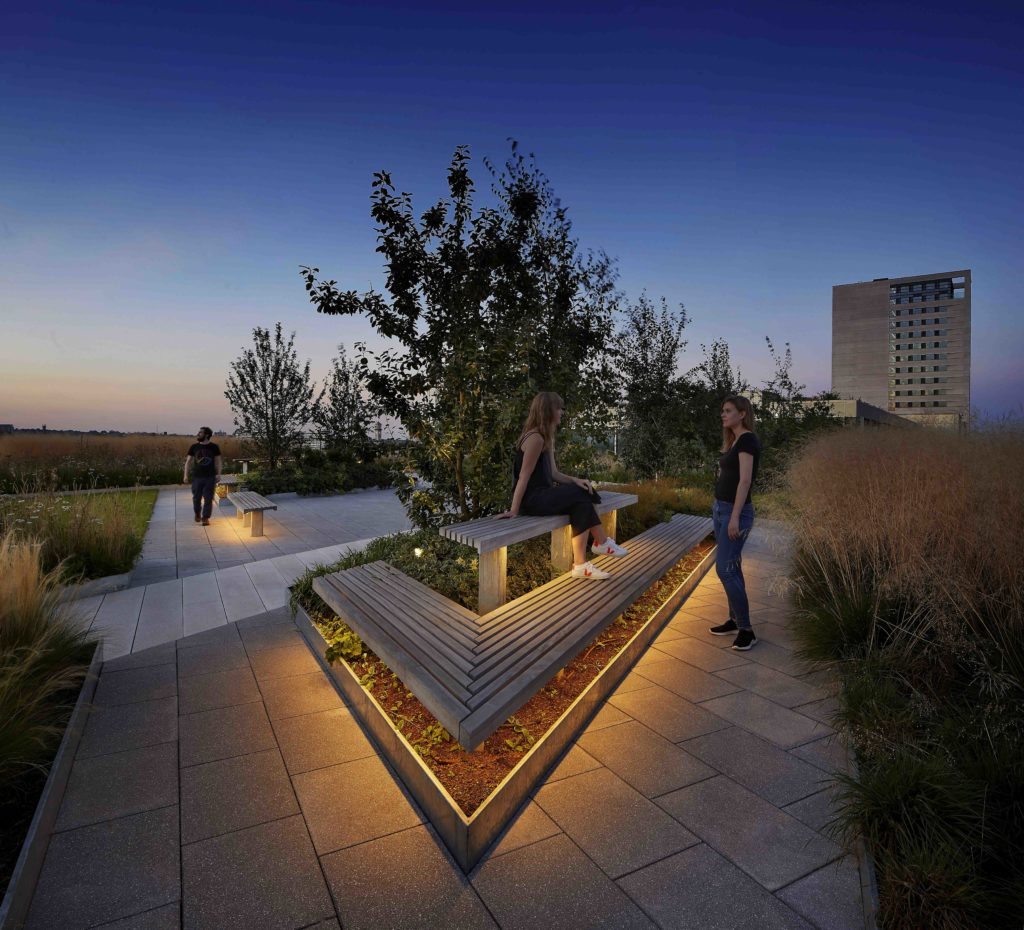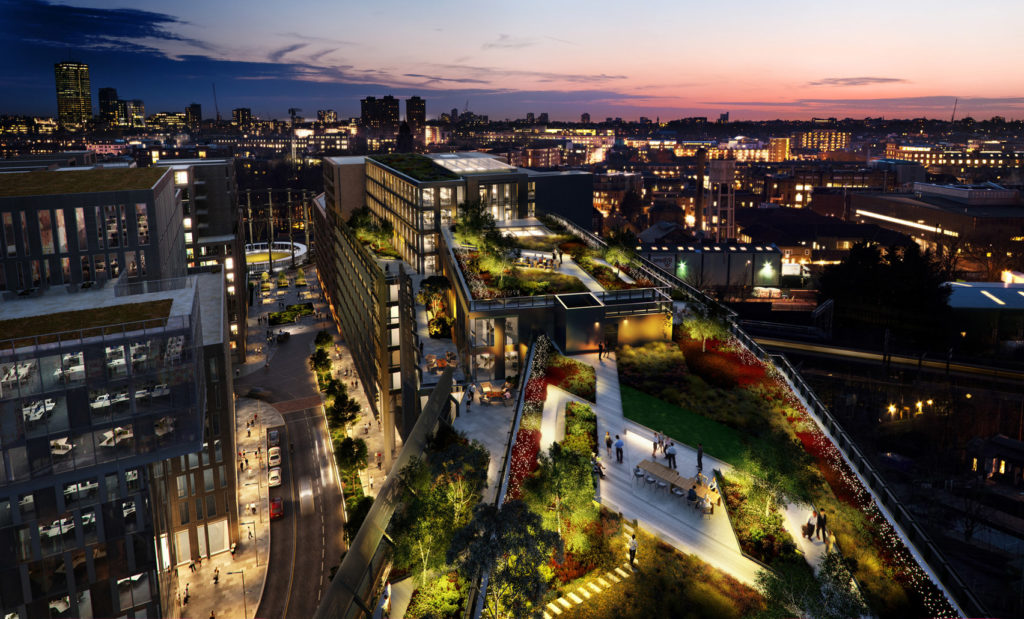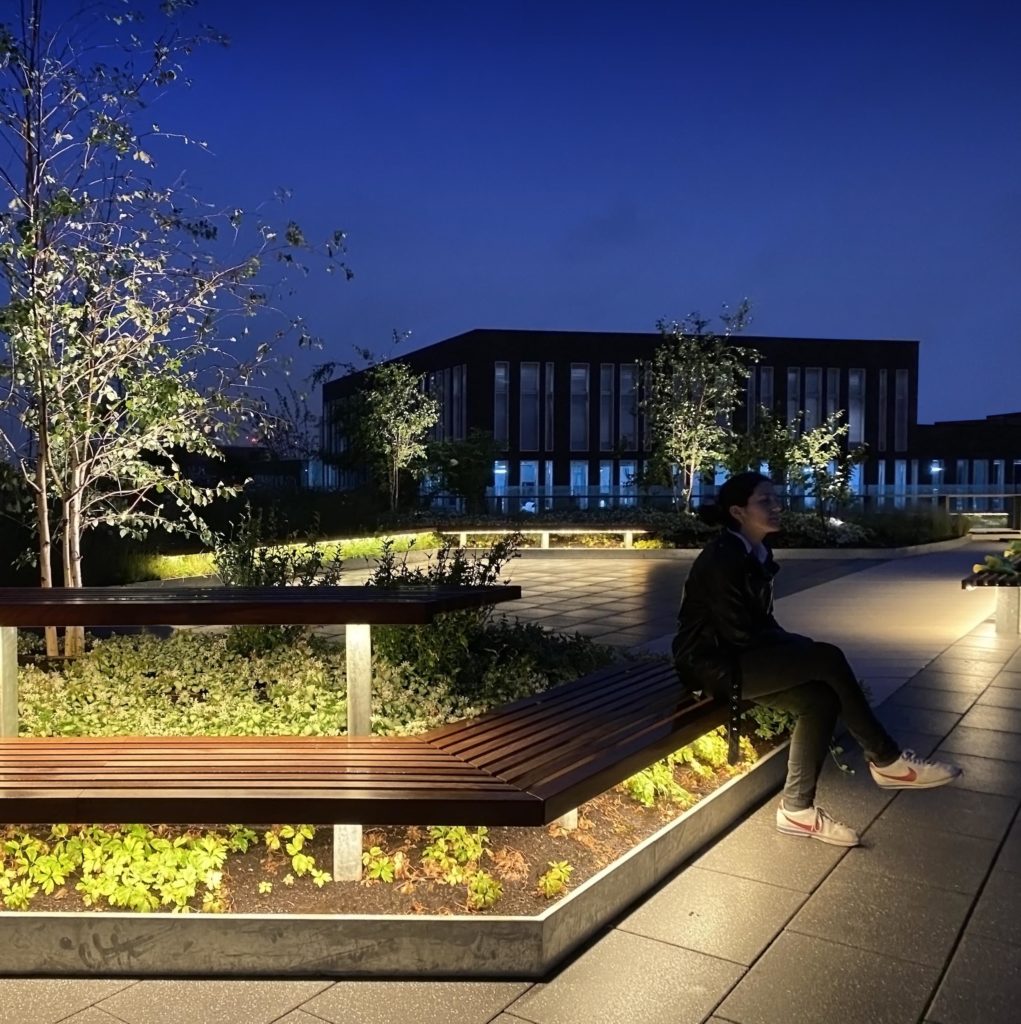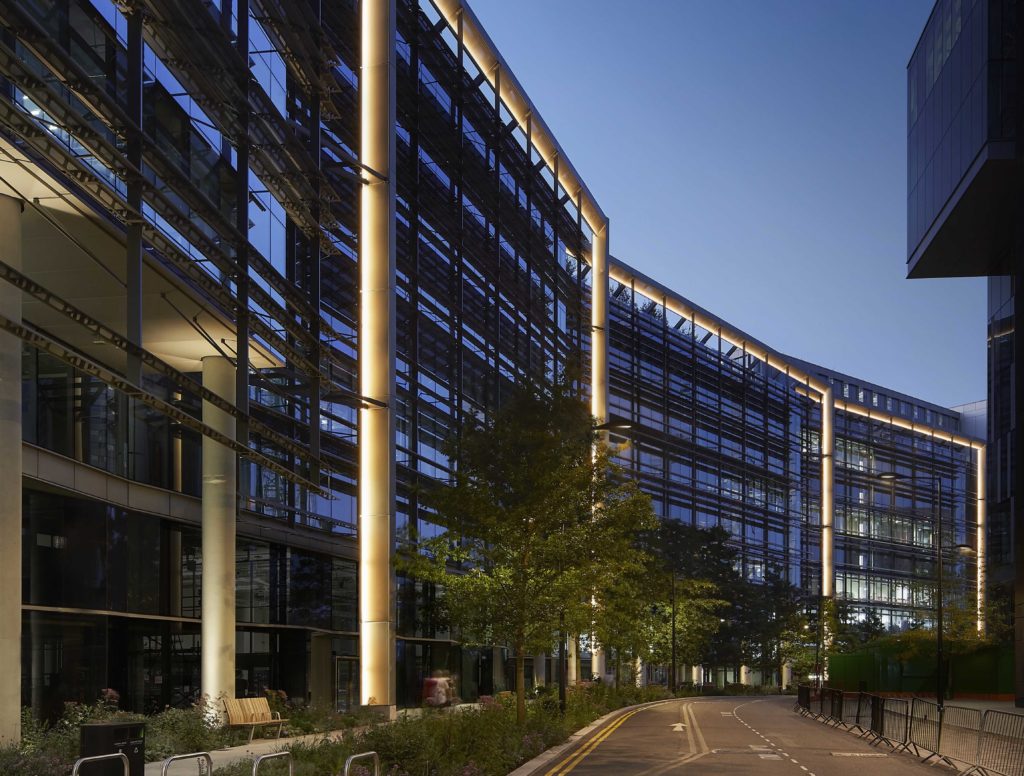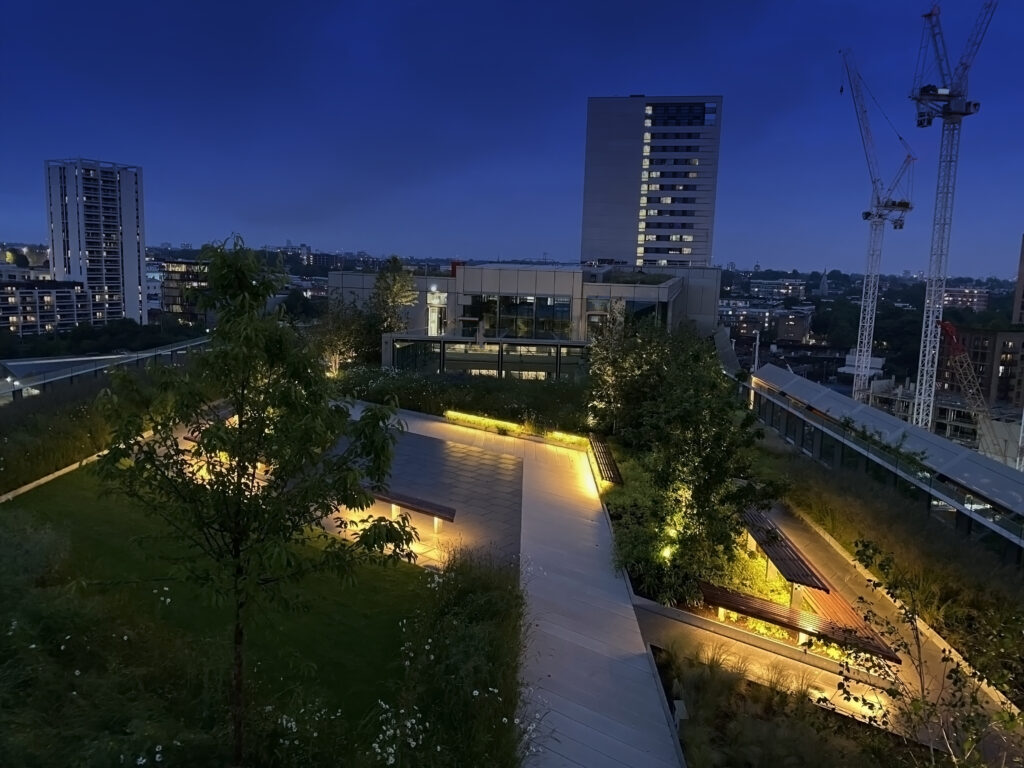Meta HQ | London
Michael Grubb Studio was delighted to be appointed by Argent to provide lighting design services for both the T2 and T3 buildings, which are situated in the commercial district of London’s Kings Cross development. The office space is occupied as the UK headquarters of Meta UK, known until 2021 as Facebook.
Comprising 12 and 10 storeys, the two buildings, designed by Bennetts Associates, offer 48,400 sqm of commercial space to the regenerated area. Both are mixed-use buildings bringing together office space, flexible retail spaces, and a Public Health Care Centre on the ground floor. The building’s façades have been carefully designed as a nod to the site’s heritage, noting the connection to the railway and industrial past.
The lighting design scope included designs for private and communal roof terraces, the façades and the adjoining public realm spaces at ground floor level.
Michael Grubb Studio developed several key principles at the very early stages of the project. The external lighting is needed to create a cohesive lit environment after dark, enhance architectural character, create an identity, and assist with wayfinding. This needed to be balanced with consideration for, and protection of, the natural environment, as well as a sensitivity to neighboring and adjacent developments. Finally, it was crucial that the scheme was a low-energy solution, easy to maintain and delivered within budget.
Michael Grubb Studio developed a range of lighting proposals in conjunction with the client and design team. These all met BREEAM criteria and followed the basic principles set out within Argent’s King’s Cross Central Lighting Vision & Technical Guidelines (2007). In addition, the external lighting strategy was designed in compliance with the ILP Guidance notes for the reduction of obtrusive light, 2011, ‘Controlling Light Pollution and Reducing Lighting Energy Consumption’. The scheme also complies with the CIBSE SLL Lighting Guides for The Outdoor Environment.
Looking specifically at the areas within the project, the lighting for the communal terraces needed to be warm, welcoming, and sophisticated. Michael Grubb Studio designed a scheme that uses layers of light, combining ambient and architectural lighting that work in harmony to add character, drama, and interest.
The scheme illuminates key points and features along the route with low levels of lighting. Seating, trees, and soft landscaping edges were identified to achieve this. An additional Light-Art feature adds variety and creates a unique experience. There have also been opportunities created to embrace darkness, helping to provide a more effective viewing platform across the city after dark. It also helps to support and nurture surrounding habitats without compromising safety.
When the roof terraces are being used for special events and private hire, a temporary lighting overlay can be used. This approach provides flexibility and prevents the need for additional clutter that is not required on a permanent basis. Additional exterior rated power supply points are strategically positioned throughout the communal roof terraces – discreetly hidden within structures, furniture, and soft planting areas. These points provide flexibility and allow for the temporary lighting installations to be installed as needed.
The external lighting of the building façade is confined to the framework structure that wraps the building. This integral lighting reveals and enhances the materiality and configuration of the mesh paneling. Discreet LED modules are attached to the upper and underside of the structural support bars, evenly illuminated each section. The LED modules are approximately 25mm x 25mm and painted with a special RAL finish to match the structural bars. Each fitting contains precise narrow beam optical distribution.
The choice of lighting equipment and light source was critical to the success of the project.
To achieve this, carefully selected lighting products were needed to perform specific functions. Several factors were taken into consideration when choosing the final specification. These included the need for a small appearance, as the design intent was to create a lighting effect, not display the lighting equipment. Optical performance was crucial, as was quality, as the solutions needed to offer superior longevity to comply with the building maintenance strategy.
Once installed, lighting was carefully focused using either fixed or lockable luminaires, with the provision of louvers, cowls, snoots, and other accessories that ensured light was fully controlled without any glare or light trespass.
The buildings were officially opened by the Prince of Wales and Duchess of Cornwall, with Meta’s 4,000 employees now at home in their new HQ.
This project is featured in the articles below
Dezeen | Architects’ Journal | Meta | The Royal Family
Client
Argent LLP
Architect
Bennetts Associates
Landscape Architect
LDA Design
Consultant
Sandy Brown Associates (acoustic), Gardiner & Theobald (cost)
CDM Advisor
David Eagle Ltd
Sustainability
Sturgis Carbon Profiling
Structural Engineers
Ramboll and BAM Structural Design
Services Engineers
Cundall and BAM Services Design
Location
London, United Kingdom
Photographer
Hufton + Crow Photography
